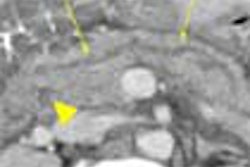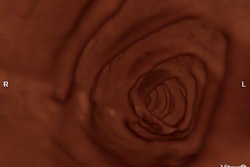When deciding which asymptomatic patients are at risk for future cardiovascular events, physicians often rely on the venerable Framingham Risk Score. But FRS alone won't identify numerous others who should probably have coronary artery scans.
A sizeable new study has found many patients with low risk also turn out to have abnormal coronary artery calcification (CAC) on electron-beam CT (EBCT). The findings were reported at the 2004 American College of Cardiology (ACC) meeting in New Orleans.
Researchers from Johns Hopkins University in Baltimore calculated the Framingham scores of 5,324 asymptomatic patients and stratified them into low-risk, intermediate-risk, and high-risk groups. (Based on a long-term study of residents in Framingham, MA, the FRS is determined by the patient's age, gender, smoking history, lipid levels, and blood pressure.)
Researchers then examined the patients' coronary artery calcification with EBCT. Abnormal CAC was defined as a calcium score greater than the 75th percentile, based on gender and age.
Among patients deemed "low risk" by FRS, 13% exhibited abnormal coronary artery calcium on EBCT. Abnormal CAC was also found in 21% of the "intermediate-risk" patients and among 29% of the "high-risk" group.
Overall, the researchers concluded, FRS is "weakly correlated" with coronary artery calcification in asymptomatic patients.
The poor correlation wasn't a complete surprise. Researchers had previously noted that a large number of patients have cardiovascular events despite having low to intermediate risk on FRS.
"It (FRS) misclassifies or gives a false sense of security to a sizeable group of asymptomatic individuals," said Dr. Milind Desai, a Johns Hopkins cardiology fellow who presented the findings at the ACC meeting.
The inclusion of CAC scores would more accurately gauge a patient's cardiovascular risk, Desai noted. But there's a catch-22 in current practice, as the ACC and American Heart Association only recommend diagnostic testing for patients based on their Framingham score.
Based on his group's findings, Desai said, "You may be missing a lot of people if you go by Framingham risk alone."
"What we are proposing is we take the next step and ask a few more questions, which would identify significantly more patients," Desai said. The additional questions would include family history of cardiovascular disease and the patient's physical activity level.
"If the answer to some of those risks is "yes," then we should go ahead and order EBCT," Desai said. "That's what we've found and that's what we actually do in our practice."
By Jerry Ingram
AuntMinnie.com contributing writer
April 23, 2004
Related Reading
Radiologists correlate coronary calcium with other CVD markers, April 6, 2004
Patients shape up after viewing CT scans of their own blocked arteries, March 24, 2004
Calcium score improves cardiac risk assessment with standard method, January 15, 2004
Coronary artery calcium detected by tomography may predict heart disease, May 15, 2003
Thin slices, quality assurance improve calcium scoring, April 16, 2003
Copyright © 2004 AuntMinnie.com




















